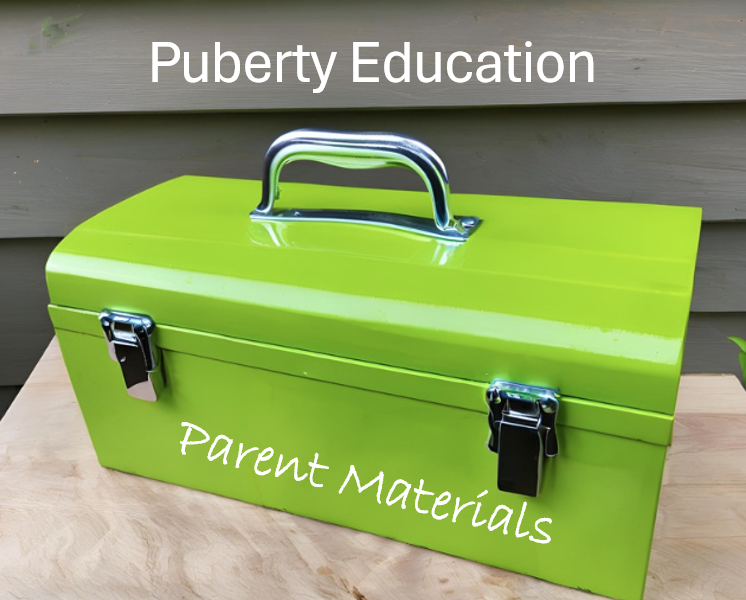No one likes to be told to teach a class without being given the tools to do a good job…especially when the topic is puberty education! That explains why so many teachers search for puberty activities they can use in lessons. So, what can educators do to acquire the best tools to teach puberty education? Read on to learn what teachers need in a well-equipped toolkit for puberty education.
Activities versus Curriculum
A curriculum is a set of sequentially ordered units and lessons that are taught in order to equip students with the knowledge and skills needed to meet the learning standards and student learning objectives for the course or program. It includes the lessons, assignments, assessments and materials that are used.
Activities are student work that involved their direct experience, rather than passive listening or reading. Activities can include using technology to create a product, having group discussions, completing a project, educational games, and many other strategies.
However, a series of activities is not the same as a curriculum. Guiding students through one activity after the next may or may not result in students meeting the learning standards. It all depends on whether or not the activities are part of a well-designed curriculum. Yes, students learn best when they are actively engaged in their learning, but only if the activities lead to mastery of a standard.
Activities versus Engagement
Engagement is often defined as the degree of students’ enthusiasm, curiosity, optimism, motivation, and interest when they are learning or being taught. (Glossary of Education Reform) The more engaged the student, the more likely they will learn. On the other hand, students who are bored, uninterested, or disengaged tend to be left out of the learning process. Engagement can include reaching students intellectually, physically, behaviorally, socially, emotionally, and culturally.
Activities are one way, among many, to increase student engagement, but only if they are relevant, inclusive, and engage students of all learning styles and abilities. Each activity must be carefully planned to ensure maximum engagement of all students in order to be successful.
Activities versus Skills-Based Instruction
Skills-based instruction is a method for teaching skills rather than simply teaching content. In any health-related curriculum, including puberty education, the goal is always to improve health outcomes by teaching students how to behave in health-promoting ways. In order to behave in healthy ways, students must learn and master health skills. For example, if students are to be successful in refusing sexual pressure, they need to be able to model a variety of ways to say no. It isn’t good enough if all they can do is list the five most effective ways to refuse sexual pressure. In other words, it doesn’t matter what students know; it matters what they do.
Activities can be designed to engage students in learning refusal skills by leading them through the four steps of skills-based instruction: 1. Introduce and motivate the learner, 2. Demonstrate the skill, 3. Engage every learner in practicing the skill and getting feedback to perfect the skill, and 4. Apply the skill to their real life.
How Teachers Maximize Puberty Lesson Activities
- Make sure all puberty activities are part of a sequential, developmentally appropriate curriculum, such as Puberty: The Wonder Years.
- Practice engagement strategies to ensure that all students are learning.
- Make sure activities incorporate the four steps of skills-based instruction.
The Puberty: The Wonder Years curriculum teaches students the skills they need to form healthy behaviors by engaging them in a sequence of lessons with active engagement. Here are some examples:
- Communication Skills (Grade 4 English or Spanish)
- Consent (Grade 5 English or Spanish)
- Media Literacy (Grade 6 English or Spanish)
Request a FREE sample lesson to see what Puberty: The Wonder Years is all about.
Want Online Professional Development?
Learn more about increasing your comfort and confidence in teaching puberty education through this Online Training Course.
Motivational Quotes
“If a teacher wants to increase student engagement, then the teacher needs to increase student activity — ask the students to do something with the knowledge and skills they have learned. … Make it so engaging that it will be difficult for students not to participate.” Ben Johnson
“The ultimate engagement is to put the learner in charge of learning. Create a rich learning environment and a motivation to learn, and the students do all the hard work of learning, while the teacher merely facilitates.” Ben Johnson
“Guide on the side, not sage on the stage.” Alison King in College Teaching
Sources:
- How Do We Know When Students Are Engaged?
- Explicit Instruction by Anita Archer, PhD
- Explicit Instruction Videos for Elementary
- 16 Elements of Explicit Instruction
- Skills-based health education, Partnership for Child Development
- The Glossary of Education Reform
- National Sexuality Education Standards
- Puberty: The Wonder Years
updated 2023-1-28



